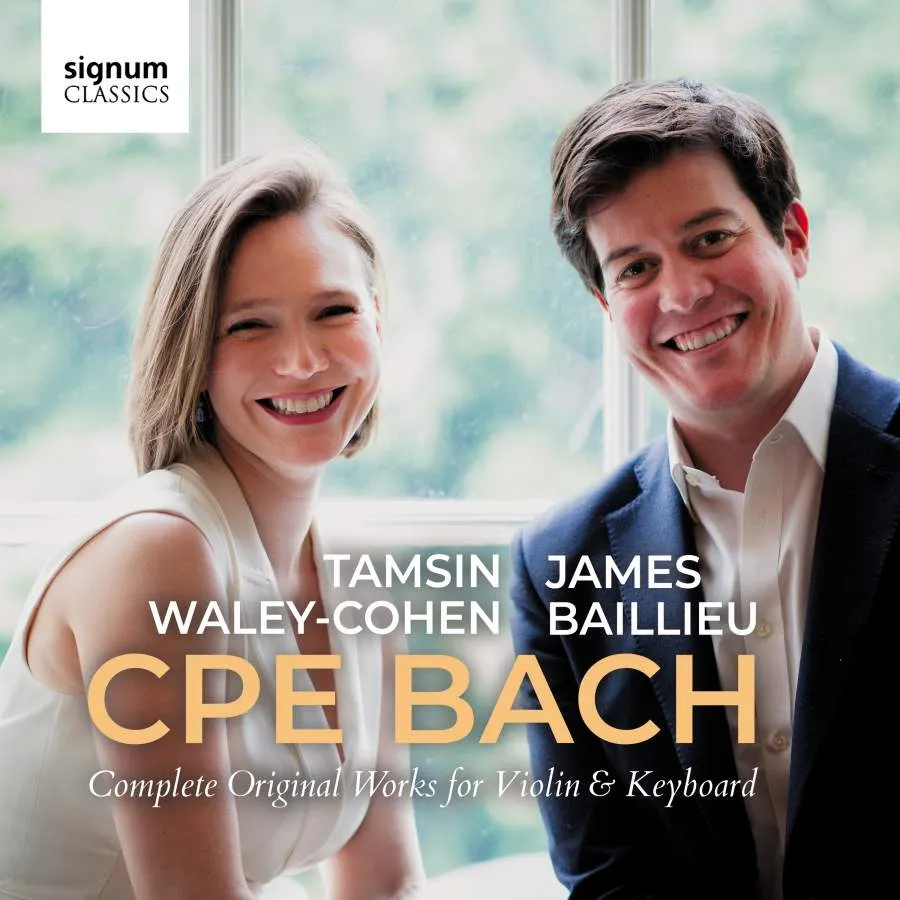
CPE Bach Violin Sonatas, Wq 71-78; Arioso con variazioni in A, Wq79; Fantasia in F sharp minor, Wq80 Tamsin Waley-Cohen (violin), James Baillieu (piano) Signum SIGCD 573 153:12 mins (3 discs)
CPE Bach’s younger acquaintance, Charles Burney, remarked that the composer’s style was so uncommon that a little habit was necessary for the enjoyment of it. Readers be assured that the habit will be acquired at once with these sparkling performances of music which spans almost the entirety of Emanuel Bach’s working life.
Broadly speaking, these are sonatas for obbligato keyboard with violin. The earliest of them, Wq 71 and 72, were written in 1731 when Emanuel was 17. Both are clearly indebted to the harpsichord and violin sonatas of his father. They are generously endowed with contrasting ideas, playful dance metre and expressive slow movements. For those distinctive stylistic hallmarks of the CPE Bach style – the language of feeling, the essence of the north German aesthetic of Empfindsamkeit – we have to jump 30 years to the four Sonatas, Wq 75-78. Tamsin Waley-Cohen and James Baillieu embrace this personal idiom with stylistic aplomb and an unfailing ability to project with tenderness the lyricism of slow movements. Their affection for the music is evident throughout, but notably perhaps in the conversational dialogue of the C minor Sonata, Wq 78. Among its admirers was Brahms who remarked upon its great beauty. The Adagio is, indeed, one of searing poignancy.
Two remaining pieces, an Aria with Variations, and an intensely expressive, freely improvisatory Fantasia, dating from 1787, set the seal on an immensely pleasurable and accomplished release. The sympathetic recording achieves an apposite balance between piano and violin while preserving an ambience suited to the music’s intimacy. Why this is a three-disc set when all could have been comfortably accommodated on two is a mystery.
Nicholas Anderson